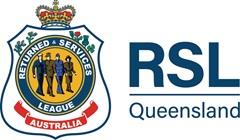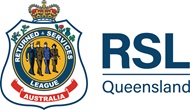
The RAAF through history
22 March 2021- History & commemoration
The history of the RAAF extends back to the early days of aviation, and it has continued to make important contributions to Defence and peacekeeping initiatives across the globe ever since. Take a look back at RAAF milestones of the past century.
31 March 1921
THE AUSTRALIAN AIR FORCE IS FORMED
The formation of the Australian Air Force (AAF) was announced in the Australian Government Gazette on 31 March 1921. Later in the year, on 13 August, following receipt of approval from the King, the Governor-General signed an order authorising the use of ‘Royal’, making this the start date for the use of the Royal Australian Air Force name.
15 June 1922
AIRCRAFT PRODUCTION BEGINS IN AUSTRALIA WITH THE AVRO 504K
A British-designed Avro 504K trainer became the first aircraft built in Australia for the RAAF. The machine was handed over at Mascot, Sydney, by the Australian Aircraft & Engineering Company.
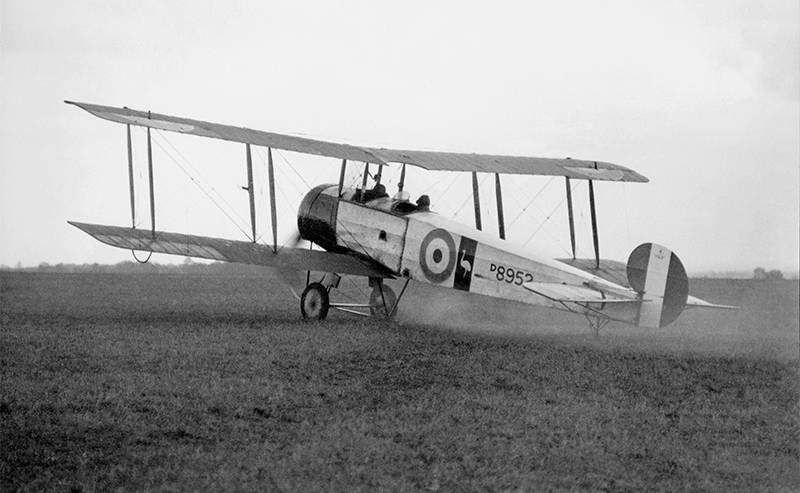
3 September 1937
INTRODUCTION OF THE NA-16-1A AIRCRAFT
The NA-16-1A undertook its maiden flight in Australia at Laverton. The aircraft was received in Australia in early August to serve as a template for local production under licence. It was actually the second aircraft, often known as the NA-33, which went into production with the Commonwealth Aircraft Corporation as the Wirraway (an Aboriginal word meaning ‘challenge’). Although only an advanced trainer, orders forthe Wirraway eventually ran to 755 aircraft, making this a key element in the development of Australian industry. The locally- produced model flew for the first time on 27 March 1939, and when war began the RAAF had its first seven on strength.
20 September 1939
PM ANNOUNCES EXPEDITIONARY FORCES TO ASSIST RAF
Prime Minister Robert Menzies announced to Parliament that Australia was offering the British Government an expeditionary force to bolster the Royal Air Force as it expanded for World War II. Apart from a force headquarters, the offer comprised one Fighter Wing Headquarters with Nos 7 and 15 Squadrons, two Bomber Wing Headquarters with Nos 1 and 8 Squadrons, three Bomber Wing Headquarters with Nos 16 and 17 Squadrons, along with an air stores park, a medical receiving station, a base area headquarters and a base depot. The number of personnel required to man this force, including a reinforcement pool of 225, totalled 3,200 officers and men. Although the offer was accepted, and recruitment commenced on 9 October, Australia’s subsequent commitment to the Empire Air Training Scheme saw the expeditionary plan put on hold on 20 October, then cancelled altogether 11 days later.
25 February 1941
FORMATION OF THE WAAAF
The Minister for Air, John McEwen, issued a press statement announcing the immediate enrolment of female wireless and teleprinter operators to fill RAAF ground staff vacancies. Proposals to raise a Women’s Auxiliary Australian Air Force (WAAAF) had been before the War Cabinet since July 1940, but not until 4 February was approval given; the Advisory War Council agreed with the decision the next day. McEwen’s announcement made clear that the women were wanted only ‘until they could be replaced by qualified men’, and because legal doubts existed over whether women could be enlisted under the Air Force Act they were at first enrolled only as auxiliaries for renewable periods of 12 months. Nonetheless, the other services quickly followed the RAAF in establishing women’s services for general war duty. The WAAAF grew to reach a strength of 18,664 in October 1944.
14 November 1944
AUSTRALIA’S FIRST ABORIGINAL FIGHTER PILOT
After joining the RAAF in August 1942 and serving as an aircraft mechanic, Len Waters applied for pilot training. Among the top five in his course at No 5 Service Flying Training School at Uranquinty, New South Wales, he graduated as a sergeant pilot. He completed an operational conversion course on the P-40 Kittyhawk with No 2 Operational Training Unit at Mildura, Victoria, at the end of which he was posted to No 78 Squadron on this day. Waters thus became Australia’s first (and only) Aboriginal fighter pilot. While serving with 78 Squadron at Noemfoor (West New Guinea), Morotai (Netherlands East Indies) and Tarakan (Borneo), he flew 95 sorties; as the Japanese had few aircraft in these areas by this stage, his missions did not entail air combat.
Promoted to Flight Sergeant in January 1945, he became a Warrant Officer 17 days before discharge in January 1946.
9 October 1947
INTRODUCTION OF HELICOPTERS INTO THE AIR FORCE
The Air Force entered the helicopter age when its first rotary wing aircraft, a Sikorsky S-51 Dragonfly, was test-flown at Laverton RAAF, Victoria. Citizen Air Force squadrons based in Sydney and Brisbane operated the helicopters.
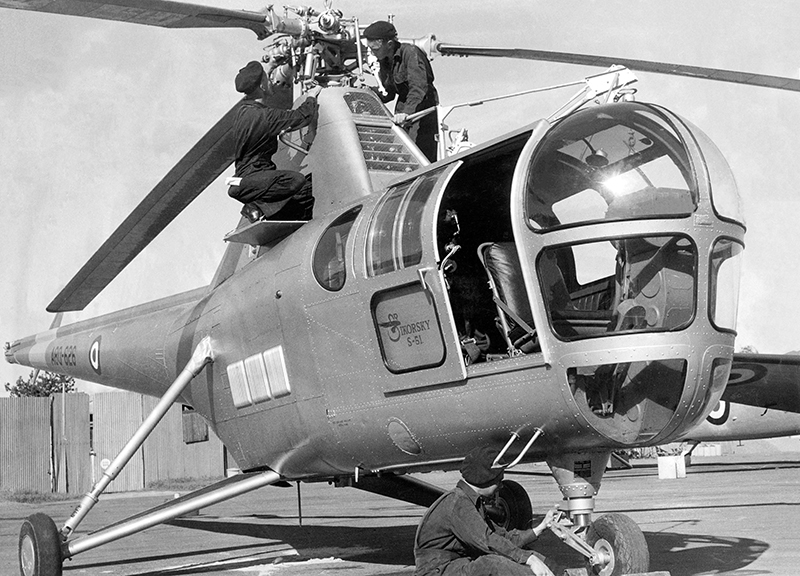
30 January 1951
WOMEN’S ROYAL AUSTRALIAN AIR FORCE
The Women’s Auxiliary Australian Air Force, which functioned during World War II, was disbanded in December 1947, but in July 1950 the re-formation of women’s services in the Army, Navy and Air Force was approved, in principle, by Cabinet. This time, the Air Force’s women’s service would no longer be an ‘auxiliary’ but a branch of the permanent Air Force. The new service would be known as the Women’s Royal Australian Air Force (WRAAF).
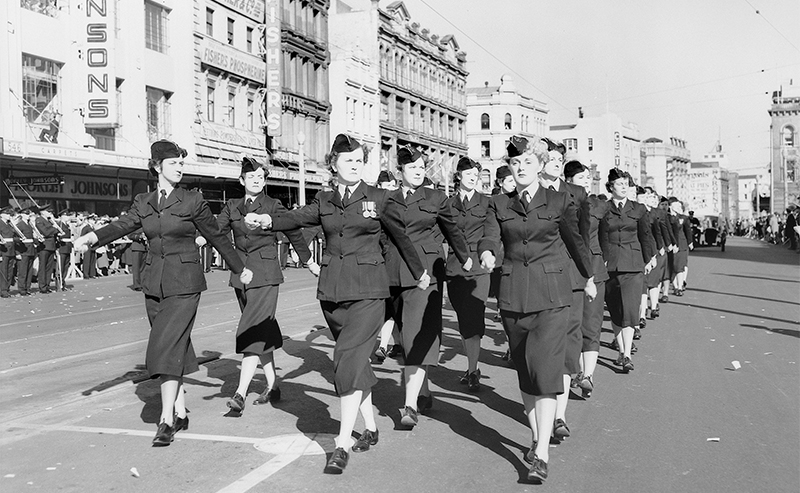
27 March 1953
LAST AIR-TO-AIR COMBAT INVOLVING THE RAAF
Two Gloster Meteor Mk8 jets of No 77 Squadron, flown by Sergeants George Hale and David Irlam, were conducting a road reconnaissance over North Korea near Sinmak when Hale saw what he thought was a lone MiG-15. It was only as he dived into the attack that he realised he was opposed by three enemy aircraft. In the ensuing dogfight, Hale’s cannon fire sent one MiG down on its back, belching black smoke and shedding bits of fuselage as it dropped from view. Immediately confronted by another pair of MiGs, he scored hits on one of these also and saw it trailing white smoke as it climbed away from him. Having expended all his ammunition, Hale broke off contact. This was the last time that 77 Squadron aircraft engaged in aerial combat in Korea, and indeed the last time that any RAAF unit has been involved in air-to-air fighting since.
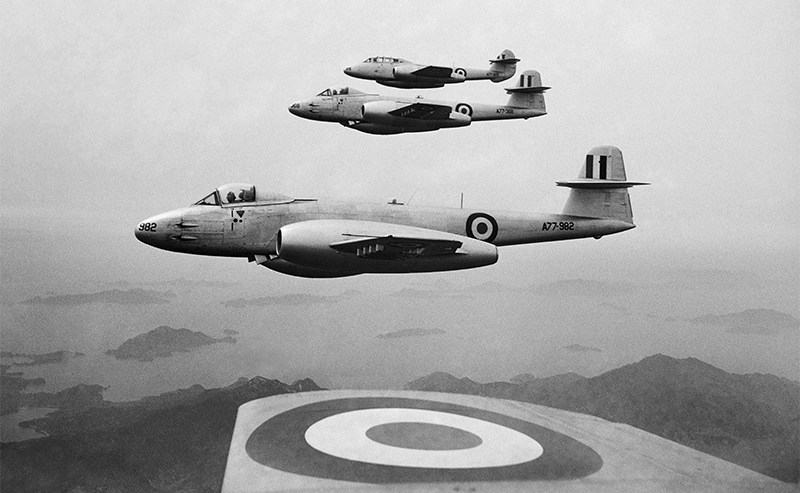
13 December 1958
C-130A HERCULES TOUCHES DOWN AT RICHMOND
The first C-130A Hercules touched down at Richmond airbase on delivery from the United States, beginning a new era in RAAF airlift that lasted more than half a century. A total of five aircraft arrived under command of Wing Commander Ian Olorenshaw, who captained the first machine to touch down. Although a formal ceremony had been held on 6 November at the Lockheed factory in Marietta, Georgia, at which the aircraft were handed over to Australia’s Ambassador to the US, Howard Beale, a further ceremony was arranged at which the recently retired Vice-President of Lockheed represented the company. In receiving its first Hercules just two years after the US Air Force accepted its first aircraft of this type, the RAAF became the first international operator. In later years, the RAAF also became the only country (apart from the US) to fly four generations of this one type.
14 September 1970
AIR FORCE TAKES DELIVERY OF F-4E PHANTOM AIRCRAFT
The first five of 24 F-4E Phantom aircraft arrived at RAAF Base Amberley to provide Australia with an interim strike capability pending delivery of F-111s that were on order but had been subjected to various delays. The supersonic F-4E provided a substantial leap in technology and capability compared to the superseded Canberra and provided the RAAF with experience on the systems and maintenance of modern strike aircraft.
1 May 1977
WRAAF DISBANDED
After nearly a decade of removing the inequalities between servicewomen and their male colleagues, the final step was taken of disbanding the Women’s Royal Australian Air Force (WRAAF) as a separate entity and transferring its personnel to the ordinary RAAF.
Similarly, members of the RAAF Nursing Service were integrated into the Air Force’s Medical Branch. The separate disciplinary code formerly
applied to women was rescinded, and a uniform code covered both sexes in areas such as powers of command. Provisions which discriminated against women by preventing WRAAF members from serving overseas, remaining in the Service after marriage, and receiving equal pay to men, had all been previously eliminated – in 1967, 1969 and 1972 respectively. From 1977, it was mainly only areas of employment classed as combat- related which remained closed to women in the RAAF.
17 May 1985
ARRIVAL OF FIRST F/A-18 HORNET AIRCRAFT
The first two F/A-18 Hornets landed at RAAF Base Williamtown, New South Wales, on completion of their delivery flight from the US. On approaching Williamtown, the group was met by a flight of Air Force Mirage fighters, which escorted them to their destination. Each Hornet was refuelled seven times from the accompanying KC-10 tanker as the group headed towards Hawaii from California. South of Hawaii another KC-10 flew out to meet them and refuelled the first tanker. After passing Hawaii, the Hornets were each refuelled another eight times before the epic flight was over. This trans-Pacific flight lasted 15 hours.
30 June 1988
FIRST FEMALE PILOTS
On receiving their wings from No 144 Pilots Course at No 2 Flying Training School at Pearce, Western Australia, Flight Lieutenant Robyn Williams and Officer Cadet Deborah Hicks became the Air Force’s first female pilots.
Williams went on to qualify as a flying instructor, underwent test pilot training in Britain and led the resident RAAF project team taking delivery of new C-130J Hercules transports.
13 October 2002
BALI BOMBING
A day after terrorists detonated bombs in two tourist bars on the Indonesian island of Bali on 12 October, killing 202 people (88 of them Australians) and injuring another 209, the Air Force was at the forefront of the relief effort mounted by the Australian Defence Force. Air Force members from across the country were activated and C-130 Hercules transports were specially configured for aeromedical evacuation tasks. Unfortunately, this was to be repeated on 1 October 2005 when a second wave of bombs detonated in Bali killing another 25 people and injuring more than 100 (17 Australians).
1 January 2020
OPERATION BUSHFIRE ASSIST
Chief of the Defence Force General Angus Campbell was tasked by Minister for Defence Senator the Hon Linda Reynolds CSC in November 2019 to give an order to local base commanders, making clear that they had the authority to use Defence resources to respond to any local contingencies under Defence Assistance to the Civil Community Category 1 (DACC 1) and that assistance continued into 2020. Senior ADF officers and other commanders were empowered to provide emergency assistance in local emergency situations to save human life, prevent extensive loss of animal life, or widespread damage to property. RAAF aircraft transported firefighter strike teams from Canberra, Adelaide and Hobart among other tasks throughout the Bushfire Assist response.
Defence enhanced its planning and liaison support to emergency services including embedding planners into Queensland State Disaster Coordination Centres and New South Wales Rural Fire Service headquarters.
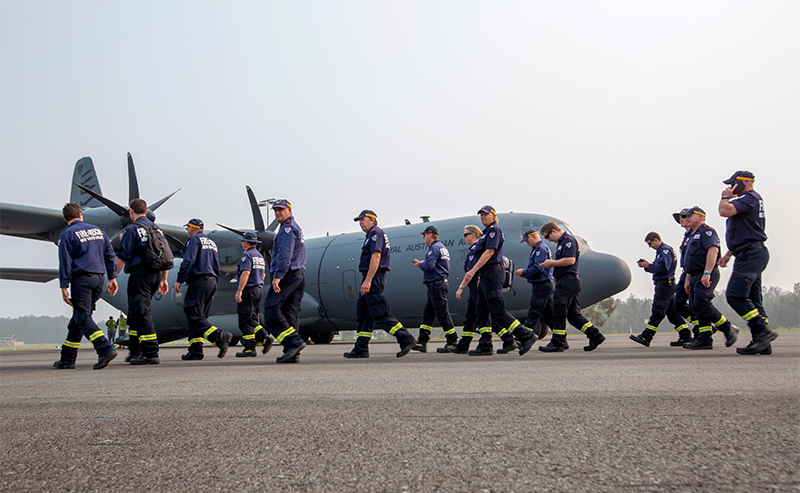
31 March 2021
THE RAAF TURNS 100
This day marks the centenary of the formation of the RAAF. During the remaining months of 2021, events and initiatives will be undertaken to honour the sacrifices and service of the past 100 years, show today’s highly capable force, and foreshadow our future evolution. Air Force members will pause momentarily to reflect and commemorate this milestone before renewing their focus to deliver an agile and capable Air Force that is an integral element of the Australian Defence Force’s Joint Force.
Excerpted from airforce2021.airforce.gov.au/journey with permission.
Related News
Loading
